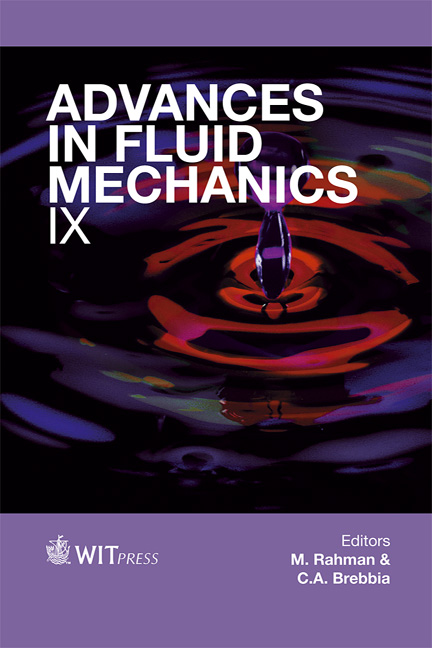The Role Of Natural Convection And Density Variations In The Solidification Process Of Water In An Annular Enclosure
Price
Free (open access)
Transaction
Volume
74
Pages
11
Page Range
441 - 451
Published
2012
Size
1,736 kb
Paper DOI
10.2495/AFM120391
Copyright
WIT Press
Author(s)
E. M. Alawadhi & R. I. Bourisli
Abstract
Unsteady natural convection flow during the solidification process of water in the annulus is numerically modeled using the finite element method. The annulus inner surface temperature is kept at a temperature lower than the solidification temperature. Ice is formed at the inner surface while natural convection flow is induced in the liquid portion. The goal of this study is to evaluate the effect of natural convection and variations in the density of water on the solidification process. The water density peak near the solidification temperature creates a unique flow structure. High resolution capturing of the solid/liquid moving boundary and the details of the flow structure and temperature contours are presented. Keywords: natural convection, solidification, density variation, annulus enclosure. 1 Introduction Phase change heat transfer has been extensively studied experimentally and theoretically in literature during the past two decades. Phase change has a wide range of utility in scientific and engineering applications. These applications include, for example, solar energy storage units, industrial refrigeration, crystal growth, welding and casting. During melting process, the effective specific heat of a substance is increased by more than 100 times, storing a large amount of energy. On the other hand, during solidification process, the specific heat is decreased to release a large amount of energy. Phase-change materials (PCM’s) are substances that are used to store/release thermal energy by utilizing this effective specific heat
Keywords
natural convection, solidification, density variation, annulus enclosure.





